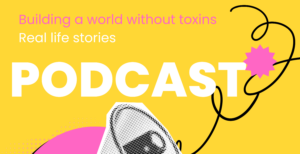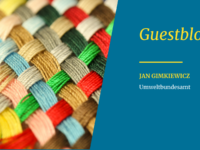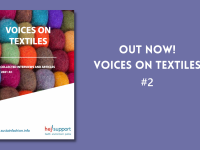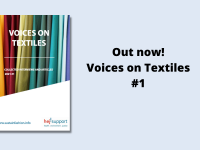Leather and the Environment

Leather is a textile that is derived from animal hides or skins, with a tradition and history dating back several millennia. While leather can be made from the skin of many different types of animals, the majority of leather comes from cowhide.1
Beginning at the cattle ranching phase, leather production leads to a variety of adverse environmental impacts at multiple points throughout its entire lifecycle. In this particular phase, there is a significant proportion of land mismanagement and carbon emissions attributable to the needed inputs involved in producing leather.2 In the Brazilian Amazon rain forest, cattle ranchers have been found to engage in illegal deforestation due to the high demand for leather.3 This deforestation has contributed to the high volume of fires reported in the Amazon, with more than 40,000 fires occurring between January and August of 2019.3
In addition to cattle ranching, cowhides are also often sourced as a byproduct of the meat and dairy industries; as long as these industries exist, leather production can serve to subvert hides from incineration.5
In order to mitigate the environmental impacts of leather, it is important that tools such as the Leather Impact Accelerator (LIA) from the Textile Exchange Responsible Leather Round Table are used to encourage sustainability through mechanisms such as improved grazing practices and reducing deforestation.5
During the tanning stage of leather production, cowhide is converted into a more stable material.4 Most tanning is completed using the chrome method, which leads to the emission of harmful pollutants such as ammonia and hydrogen sulfide as effluents as well as material wastage of the carcinogenic heavy metal chromium.4 More than 60% of the raw materials used in leather tanning are converted to solid and liquid waste, which includes both tanned and non-tanned solid waste as well as wastewater effluent.4
While leather production certainly has its disadvantages, proponents argue that it is a sustainable material choice because of its longevity, and it is marketed as a durable alternative to cheap, disposable products that are the hallmark and staple of fast fashion items.2
Considering the environmental cost of leather, faux or alternative leather may seem like a more responsible choice at first; however, most available leather alternatives are made from plastic derived from fossil fuels.2
Innovation is breeding creative solutions to replace plastic-based synthetic leather, with new alternatives emerging from natural base materials as diverse as apple peels, mushrooms and cactus fibers.5 Until these options become widely available and easily accessible, it is essential that advocacy efforts on all levels continue to push the leather industry to become as responsibly sustainable as possible.
References
- MasterClass. (2020, November 8). Fabric guide: Learn about leather. Retrieved from: https://www.masterclass.com/articles/learn-about-leather
- Cline, E.L. (2019, May 2). Can leather go green? Vogue Business. Retrieved from: https://www.voguebusiness.com/companies/green-sustainable-conscious-leather
- Siegle, L. (2019, August 29). Burning issue: How fashion’s love of leather is fueling the fires in the Amazon. The Guardian. Retrieved from: https://www.theguardian.com/fashion/2019/aug/29/burning-issue-how-fashions-love-of-leather-is-fuelling-the-fires-in-the-amazon
- Sivaram, N.M., & Barik, D. (2019). Toxic waste from leather industries. Energy from toxic organic waste for heat and power generation. Elsevier. Retrieved from: https://www.researchgate.net/profile/Nm_Sivaram/publication/330053682_Toxic_Waste_From_Leather_Industries/links/5cf7e9944585153c3db721d8/Toxic-Waste-From-Leather-Industries.pdf
- Opperskalski, S., Siew, S., Tan, E., & Truscott, L. (2020). Preferred fiber & materials market report 2020. Textile Exchange. Retrieved from: https://textileexchange.org/wp-content/uploads/2020/06/Textile-Exchange_Preferred-Fiber-Material-Market-Report_2020.pdf






